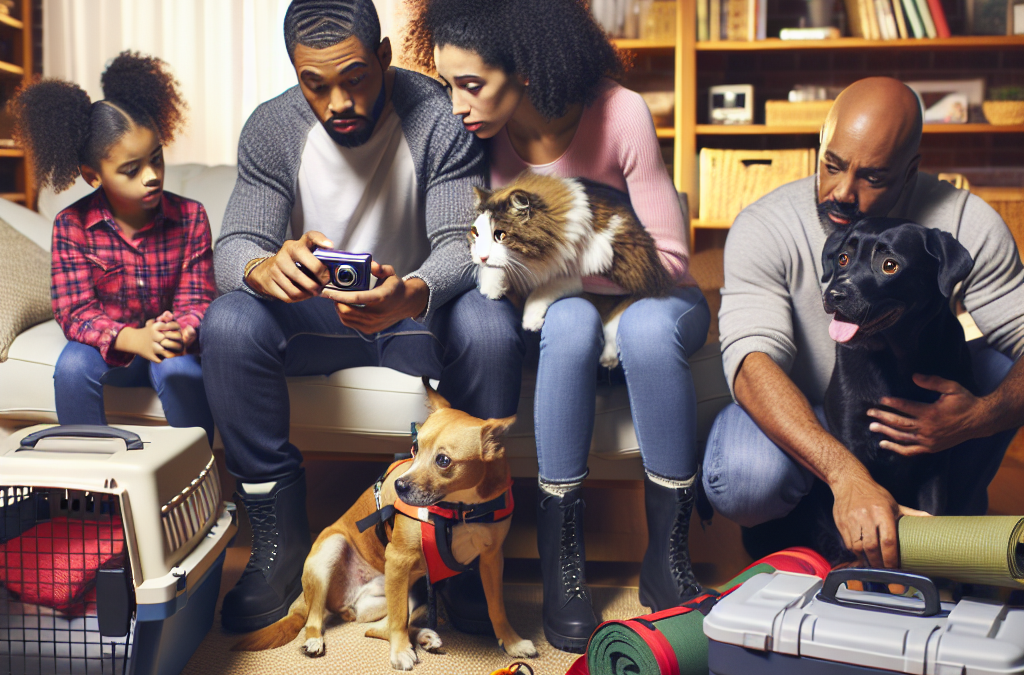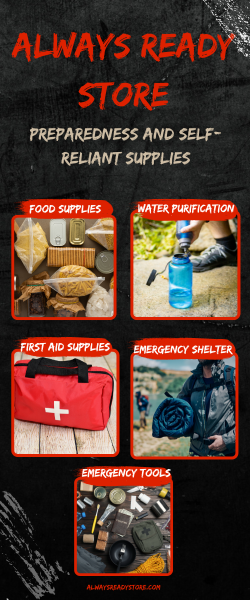Understanding Your Pet’s Needs
Recognizing Their Basic Needs
During an emergency, it’s super important to recognize that pets have basic needs — food, water, shelter, and companionship. If you’ve ever been in a stressful situation, you know how important it is to have the essentials. Your furry friends feel that too! Each type of pet can have different requirements, so it’s essential to know what yours needs specifically.
I remember when we faced a snowstorm a few years back. Our supplies of pet food were running low, and I had to scramble to stock up. I was definitely sweating it over whether we’d have enough kibble for my dog’s dietary restrictions. It’s best to stockpile what your pet needs ahead of time!
Making a clear list of your pet’s necessities can help ease the anxiety of an emergency situation. Having emergency food and water on hand can not only ensure your pet’s safety but also give you peace of mind when you need it most.
Health Considerations
Your pet’s health is absolutely paramount in any emergency plan. Regular check-ups with the vet are crucial, especially for pets that have ongoing health conditions. If your beloved cat requires medication, what’s your strategy for keeping their supply stocked? Knowing the ins and outs of your pet’s health ensures that they’re cared for even when chaos unfolds.
It’s always a good idea to keep a copy of their medical records handy and maybe even a list of their medications. Trust me, you don’t want to be scrambling for the vet’s number while trying to manage a crisis! Especially if you have multiple pets, keeping their info organized can save you a ton of stress.
Ultimately, understanding their health needs can make a world of difference during emergencies. Let’s not forget that your furry friends are family too, and their well-being is just as important as everyone else’s!
Thank you for reading this post, don't forget to subscribe NOW for FREE!
Creating a Pet Emergency Kit
One of the most practical things you can do is create a dedicated pet emergency kit. You know, just like you have for human members of the family! Start with compiling food, water, a manual for any medications, and a few comfort items like their favorite toy or blanket.
Don’t forget about leashes, carriers, and bowls! If your pet isn’t feeling secure, it might just make your emergency situation ten times worse. Think about what comforts them to help mitigate stress, even when things are tough.
Having a plan always helps ease anxiety. And trust me, knowing you have everything in one place takes so much pressure off in a stressful moment.
Establishing a Communication Plan
Involving Family Members
Part of an effective emergency plan is making sure everyone in your family knows how to care for your pet. It’s not just you that needs to know the emergency procedures; everyone should be on the same page. For example, if you have kids, make sure they know how to handle the pets safely.
When times get tough, a little chaos can happen, especially with children. I’ve found practicing these procedures helps everyone to remember what to do in case of an emergency.
Also, relay this information clearly with any additional caregivers like neighbors or friends. Making them part of the plan can be a great backup if you aren’t able to get home to your fur babies right away.
Designating a Pet Caregiver
Sometimes, things happen, and we can’t always be the ones to take care of our pets. Designating a trusted friend or family member who can step in to care for your pets if you can’t get back home is a lifesaver. It’s like giving yourself a safety net.
Provide them with all the necessary information they need, from their feeding schedules to vet contacts. Be sure to make a list of their likes, dislikes, and quirks — believe me, it can help a ton if they’re caring for a picky eater!
I once had a neighbor step in when I had to leave town unexpectedly. Having someone reliable on speed dial gave me such peace of mind, knowing my dog was being loved and cared for even when I couldn’t be there.
Emergency Communication Tools
In today’s tech-savvy world, there are so many handy tools available to help us stay connected, even in a crisis. Whether it’s an app that alerts you when to check your emergency supplies or just a shared message thread with your pet’s caregivers, keeping communication lines open is crucial.
Also, having a list of all pet-related contacts in your phone and a physical copy somewhere accessible can come in clutch. You never know when you might need to contact your vet or a pet emergency service when things go south.
Utilizing communication tools effectively can help relay information quickly, ensuring everyone involved knows how to handle the situation, minimizing the stress for your pet!
Evacuation Strategies with Pets
Planning Safe Routes
In the unfortunate event of having to evacuate, knowing your safe routes with your pets ahead of time can save significant time and stress. Look into pet-friendly shelters or hotels, and map out your routes. The last thing you want is to get caught in traffic with an anxious pet in the car.
Recently, we had to evacuate due to a fire nearby. I had my routes mapped out, and it made the process so much easier. My dog knew just what to do, and there was less freak-out because I was prepared. It’s almost like they can sense your calmness!
Make sure to practice these routes with your pet, if possible. That way, it won’t be the first time they experience the car ride under such stressful conditions, helping to reduce their anxiety as much as possible!
Creating a Pet Evacuation Plan
An evacuation plan specifically for your pets is a must-have. This includes details like how to carry your smaller pets and plans for larger ones. If your pet is skittish, think of how they react in unfamiliar situations and prepare accordingly. This could also involve finding safe carriers in advance!
I remember the first time I had to put my cat in a carrier; well, let’s just say it turned into a mini wrestling match. So now, I make it a point to regularly get them used to it — even when we’re not actually evacuating. Creating a plan is one thing, but making sure pet issues are taken care of makes a world of difference!
By preparing these details, you ensure a smoother evacuation for you and your pets, minimizing stress and maximizing safety.
Executing Your Plan Effectively
Once you’ve established an evacuation plan, it’s all about execution. Ensure your pets are comfortable in their carriers and keep their favorite items nearby. When the time comes, grab your pet emergency kit and head out without any hesitation.
The key here is to remain calm and collected. Your pets can feel your energy, and your calm demeanor can soothe them during such stressful situations, allowing for a more successful exit.
Having a reliable, rehearsed evacuation plan gives both you and your pets a much higher chance of keeping safe and making it out together when everything around you is in complete disarray.
Post-Emergency Care for Pets
Assessing Their Emotional State
Once the crisis is over, the journey isn’t quite done yet. Pets can experience emotional distress after such significant events, just like us humans do. It’s essential to evaluate their behavior and be mindful of any changes that could indicate stress or anxiety.
After the fire evacuation, I noticed my dog seemed a little on edge, even when we returned home. It was heart-wrenching to see them uneasy in their familiar surroundings. Creating a safe space for them to decompress helped significantly. Hang out with them, cuddle, and provide reassurance; this can go a long way.
Understand that they may need extra comfort during this time, and don’t shy away from consulting your vet if you notice lasting behavioral changes. Your pet’s mental well-being is just as critical as their physical health!
Restoring Routine
Sticking to their routine can really help normalize things for your pets after an emergency. Once you’re back home, returning to their usual feeding and playtime can help establish a sense of normalcy and comfort for your furry friend.
I’ve found that keeping mealtimes consistent and sticking to their usual walk schedule really helped my pets feel safe and settled again. It gave them a sense of familiarity that they needed desperately after all the chaos.
Remember, recovery takes time for both you and your pet. Be patient and allow them the space they need to adjust back to the world. Your ongoing support will secure a faster recovery and ultimately fortify your relationship.
Providing Health Check-Ups
It’s a great idea to get your pet checked over by a vet following a stressful event. There could be underlying health issues that manifest due to the stress, or they may have gotten minor injuries during evacuation that you didn’t notice.
Some pets might even need help processing their experience. Being proactive about their physical health can help ease your mind and catch any problems before they become more significant concerns.
Regular health check-ups should always remain a priority, particularly after an emergency. Keeping tabs on their health is essential; after all, you want to ensure they have a long, happy life!
Frequently Asked Questions
1. Why is it important to include pets in emergency plans?
Including pets ensures their safety and well-being, just like for human family members. Animals can experience stress and anxiety, and having a plan helps keep them safe and comfortable during crises.
2. What should I include in a pet emergency kit?
Your pet emergency kit should have food, water, bowls, a leash, waste bags, first aid supplies, medications, and comfort items such as their favorite toy or blanket. Don’t forget a pet carrier if needed!
3. How can I help my pet cope after an emergency?
Provide a calm and loving environment, restore their routine as much as possible, and consider extra attention or reassurance. If behavioral changes persist, consult your veterinarian for guidance.
4. What should I do if I can’t evacuate with my pet?
Designate a trusted friend or family member who can care for your pet in your absence. Always have a backup plan and ensure your caregiver knows how to handle your pet’s needs.
5. Are there specific resources for pet-friendly shelters during emergencies?
Yes! Many organizations provide lists of pet-friendly shelters and resources. It’s wise to research and have this information ready before an emergency occurs.






